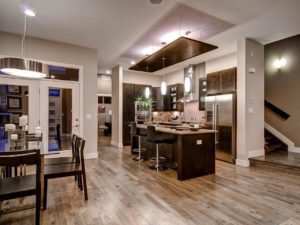The Array of Benefits from Embracing Green Flooring: Eco-Conscious Decisions for Your Abode
Why Opt for Green Flooring?
The Ecological Footprint of Conventional Flooring
The floors beneath our feet wield incredible influence over nature’s balance. Conventional flooring, be it synthetic carpets, non-renewable hardwoods, or man-made tiles, often comes with a heavy price: deforestation, mammoth carbon imprints, and the infiltration of toxic substances. These practices deplete our precious resources and significantly tarnish our planet’s health.
The Upsides of Eco-Conscious Materials
Embracing green flooring opens up a world of advantages. Eco-friendly materials like bamboo, cork, and reclaimed wood are sourced responsibly, harboring minimal ecological impacts. Their production often demands less energy, slashing carbon emissions. Moreover, these green alternatives enhance indoor air quality by shunning harmful chemicals, cultivating a healthier indoor environment.
Economic Benefits with A Long-Term Perspective
While sustainable flooring might show a heftier price tag at first glance, its long-term fiscal perks are noteworthy. Green materials not only last longer, reducing the frequency of replacements, but also minimize maintenance and repair costs. Many eco-friendly options boast insulating properties, which translate into noticeable savings on your energy bills, ensuring warmth in winter and coolness in summer.
Favored Eco-Friendly Flooring Choices
Bamboo: The Swiftly Renewing Marvel
Bamboo stands out as a superb green choice, credited to its rapid growth. It matures within three to five years, compared to the decades required by traditional hardwoods, making it incredibly renewable. With its blend of durability and stylishness, bamboo adds a touch of modern elegance to any dwelling.
Cork: Resilience Meets Insulation
Cork is another stellar sustainable choice, derived from the recurrently harvested bark of cork oak trees. Its distinctive cellular makeup affords it exceptional durability and bounce. Furthermore, cork offers splendid insulation against both noise and temperature swings, rendering it a cozy pick for any room in your nest.
Reclaimed Wood: Recycling at Its Finest
Reclaimed wood flooring breathes new life into old wooden structures—barns, buildings, you name it. Not only does this reduce the demand for fresh timber, thereby combating deforestation, but each piece carries a unique history, gifting your floors with unparalleled character and charm.
Eco-Conscious Carpeting: From Wool to Recycled Fibers
The landscape of sustainable carpeting has blossomed, offering an array of eco-friendly alternatives. Wool carpets bring natural luxury and durability, while carpets fashioned from recycled materials, like PET from plastic bottles, deliver green solutions without sacrificing style or comfort. These carpets are often enhanced to resist stains and moisture, making them practical for busy homes.
Finding Your Perfect Green Flooring in Washington, DC
Selecting the perfect green flooring for your Washington, DC residence requires weighing a few pivotal aspects. Here’s a detailed breakdown to guide you in making a well-informed choice.
Considerations: Climate, Usage, and Visual Appeal
Washington, DC’s climate, with its high humidity levels, impacts flooring choices differently. Bamboo and cork, for instance, are well-suited to handle such conditions. Consider the room’s function too—high-traffic zones like living rooms versus quieter spaces like bedrooms. And let’s not forget aesthetics; your green flooring should harmonize with your interior design while mirroring your unique style.
Availability of Sustainable Materials Locally
Local availability plays a crucial role. Washington, DC boasts a surging market for green products, including bamboo, cork, and reclaimed wood. Opt for suppliers committed to sustainability who offer a diversity of eco-friendly choices. Purchasing locally not only supports the community but also trims down the carbon footprint related to transport.
Installation Tips and Washington, DC’s Professional Services
Ensuring proper installation is vital for maximizing the performance and life span of your eco-friendly flooring. In Washington, DC, many experts specialize in green flooring installations. Seek out professionals skilled with sustainable materials who offer services like dustless refinishing and effective restoration, maintaining a clean indoor environment. A professional touch guarantees the quality and robustness of your flooring, letting you relish the full eco-conscious benefits.





